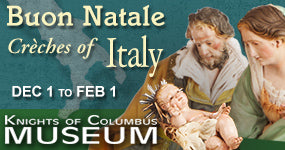“History, one might say, is sculpted by the winners,” curators Michael Hatt, Martina Droth and Jason Edwards co-write in the book that accompanies Sculpture Victorious: Art in an Age of Invention, 1837-1901. They’re responding to an earlier observation that, during the Victorian era, in the heyday of Britain’s vast global empire, the sculpture the nation’s artists produced (such as the elephant pictured third) “presented an unfailingly positive view of the Victorian world, banishing critique and moral nuance.”
Clearly, there’s little need to worry about that kind of myopia from the Yale Center for British Art itself, where Victorious’s flag remains planted for another nine days, and where two other exhibits—Figures of Empire: Slavery and Portraiture in Eighteenth-Century Atlantic Britain and Picture Talking: James Northcote and the Fables, both ending December 14—also question recorded history’s cozy relationship with the victors. In all three shows, truth is the ultimate object of inquiry, even as that inquiry occurs via creative objects.
Of the three, Figures of Empire is the most viscerally affective, confronting as it does the great shame of slavery. Most of its portrait paintings depict master and slave, together, and this is a very telling thing, because these works weren’t undertaken lightly. Expensive and meaningful endeavors to the individuals and families that commissioned them, “portraits were a principal means of self-fashioning,” as one placard notes, where nobility, refinement, wealth and power could be communicated through carefully selected details including clothes, possessions and people.
sponsored by
And people that were possessions. Within one gilded frame, a black boy hunched over in the background, with a characteristic metal slave collar around his neck, looks up at a young white girl in frilly hat and dress. His eyes are frenzied, worshipful, seemingly desperate to see her return his gaze. Instead, she looks at the viewer, and the intended effect is achieved: she’s powerful, he’s not. He’s there to please her, and by the way, so is the well-groomed dog at her feet, who gazes up at her with a look that echoes the boy’s, and who also wears a collar.
On another canvas, featuring a family of white nobles sitting around a drawing room, you have to hunt to find the slave. Then you see her—or rather, you see her tiny arms and dark hands, and the billow of her servant’s dress. These parts extend inward from the edge of the painting, presenting a silver tray to a seated man and woman. On the neighboring placard, the curators posit that the painting was cut down from its original size, and though they can only speculate as to why, it was suggested during a tour that a member of the family’s later lineage may have altered the painting expressly to remove the slave—a revision of history intended to square the imagery with the new social mores of a post-abolition era.
And if we needed any further convincing that the YCBA is willing to turn its gaze toward uncomfortable but revealing places, there’s the very first painting of the exhibit, pictured first above. It features the Welshman Elihu Yale, the university’s very namesake, and three contemporaries sitting around a table, being served by a young male slave. The boy, carrying a flagon for pouring the Madeira depicted in the noblemen’s cups, is positioned on the far edge of the frame, a physical marginalization to match his peripheral social status.
sponsored by
By comparison, artist James Northcote (1746-1831), whose exhibit begins mere yards away from that Elihu Yale portrait, enjoyed a position of great privilege in British society. He received plentiful, sometimes prominent, commissions for his portraits and history paintings. He exhibited regularly at the Royal Academy in London. And he put together two innovative and well-received books of fables near the end of his life. Throughout his career, brushes with greatness were commonplace, moving in the same circles as his era’s art-scene movers and shakers, even finding friendship with a handful.
Yet, in some ways, he could probably relate to Empire’s servants. As the companion book describes him, he had a “hatred for imbalances of power, hypocrisy and self-interest;” meanwhile, cursed with a “short and very slight stature” and a low tolerance for the ingratiating sort of politicking that could have won him influence and opportunity, he often felt, and ultimately was, doomed to “marginality.” Indeed, 183 years after his death, the YCBA exhibit is his first monographic exhibition—that is, his first solo show—ever.
Perhaps it’s all the more appropriate, then, that the exhibit pivots around a body of Northcote’s work that was never intended to see the light of day: the meticulous cut-and-paste collaging he did (including the specimens pictured second) to plan out the designs for his book One Hundred Fables, Original and Selected, and a posthumously published second collection, Fables, Original and Selected. “This is almost a cult work. No one was supposed to see these collages. They weren’t exhibited. We’ve had to dig them up,” says curator Mark Ledbury.
They represent yet another excised piece of history, finding a way back into the narrative through the Yale Center for British Art.
Sculpture Victorious | Figures of Empire | Picture Talking
at the Yale Center for British Art
1080 Chapel St, New Haven (map)
Tues-Sat 10am-5pm, Sun noon-5pm
(203) 432-2800
www.britishart.yale.edu/exhibitions
Written and photographed by Dan Mims.










